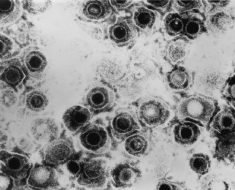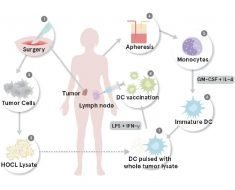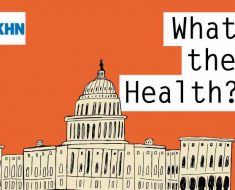When it comes to heart attacks, a woman’s symptoms are subtler than a man’s. Whereas a man may have fierce chest pain, a woman may feel nauseated, tired, and out of sorts.
It took us decades to discover the difference. Meanwhile, women may have had fewer heart attacks then men, but when they did have them, they were more likely to die from them.
Turns out that these sorts of differences may also apply when it comes to another dangerous and potentially deadly disorder: sleep apnea.
It affects more than 18 million American adults, with most studies estimating the prevalence at 3-4 percent of men and 2 percent of women (though the risk equals out after the age of 50). But the numbers can be misleading. According to recent research, the disorder is often overlooked in women, and may be more prevalent than we thought.
According to a 2013 study of 400 women aged 20-70 years, for example, a startling 50 percent had sleep apnea. Researchers also found that women with high blood pressure, as well as women who were obese, were at a much higher risk.
“We were very surprised to find such a high occurrence of sleep apnea in women,” said lead author Dr. Karl Franklin, “as it is traditionally thought of as a male disorder.”
Worse, the disorder may be even more dangerous for women than for men. Research from the University of California Los Angeles (UCLA) School of Nursing indicates that the repercussions of the disease can have an even bigger impact on women than on men.
“We now know that sleep apnea is a precursor to bigger health issues,” said Paul Macey, lead researcher of the study. “And for women in particular, the results could be deadly.”
What is Sleep Apnea?
The term “apnea” is a Greek word that means “without breath,” and that is what happens in people with the disorder—they stop breathing. While asleep, the muscles in the back of the throat relax, reducing airflow or even completely choking off the breath.
The lack of air wakes the person up briefly, but she usually doesn’t remember it. This obstruction/waking/breathing cycle can occur between five and 30 times or more each hour, significantly disrupting sleep.
There are three main types of the disorder:
Since obstructive sleep apnea is the most common type, we’ll focus on that for the remainder of this article.
What Causes Sleep Apnea?
There are a number of potential causes of sleep apnea, but one of the main ones is obesity. With the rising obesity epidemic in the U.S., more and more people are being diagnosed with sleep apnea.
A 2011 study, for example, reported that the dramatic increase in the prevalence of obesity has paralleled the increase in the prevalence of obstructive sleep apnea (OSA). The researchers also noted that the disorder is still markedly under-diagnosed, and that even modest weight loss improved the condition.
An earlier 2008 study found that the disorder was linked with the epidemic of obesity in Western society, and a second study published that same year found that the prevalence of sleep apnea exceeded 30 percent among the obese, and could be as high as 50-98 percent among the morbidly obese.
“Obesity is probably the most important risk factor for the development of OSA,” the researchers wrote, adding that 60-90 percent of adults with OSA are overweight.
Other potential factors that can increase risk of sleep apnea include:
- Chronic sinusitis or nasal congestion
- Menopause (changes in hormones can increase risk)
- Large tonsils or adenoids
- Smoking and alcohol use (particularly before sleep)
- Family history of the disorder
- Recessed chin or large overbite
- Large neck circumference
- Sleeping tablets or tranquilizers
- Race—the disorder is more common in African-Americans and Hispanics than in whites
Serious Complications of Sleep Apnea
Symptoms of sleep apnea can include snoring, dry mouth and sore throat, morning headaches, daytime sleepiness, insomnia, irritability, heartburn, difficulty concentrating, and frequent nighttime urination.
When left untreated, sleep apnea becomes much more dangerous, increasing the risk of or worsening other health conditions, including headaches, high blood pressure, metabolic syndrome, cardiovascular disease (including heart attacks and strokes), type 2 diabetes, glaucoma, and liver problems. It can even increase risk of mortality.
In 2014, for example, scientists found that moderate-to-severe sleep apnea was associated with a large increased risk of all-cause mortality, incident stroke, and cancer. An earlier 2009 study found similar results, with severe sleep apnea associated with increased risk of death from any cause in middle-aged adults. Those with the condition were 46 percent more likely to die than those who didn’t have it.
Other studies have found that sleep apnea increases risk of mortality from cancer, stroke, and heart attack.
Sleep Apnea May be More Serious in Women
We used to think that women were less likely to succumb to these issues than men, but now that conclusion is being questioned. First of all, many researchers and doctors now believe that women are underdiagnosed. This may be because women aren’t aware of the signs and symptoms, or may not associate the disease with their gender, but it may also be because doctors are failing to diagnose them.
After all, for decades doctors didn’t understand that women could have different symptoms than men when it came to heart disease. Now we’re finding that they may be similarly uneducated when it comes to women and sleep apnea.
Dr. Grace W. Pien, assistant professor of medicine, divisions of Sleep Medicine and Pulmonary and Critical Care at the University of Pennsylvania School of Medicine, told the National Sleep Foundation that though there is now a greater awareness that sleep apnea is quite common in women, there are still several reasons why women may be less likely than men to be diagnosed and treated:
“First, physicians often have a predefined notion of the type of patient who has sleep apnea, like a middle-aged overweight or obese male….Second, women may present with slightly different symptoms than the ‘classic’ symptoms of snoring, witnessed breathing pauses at night and excessive sleepiness during the day—not a surprise, when one realizes that these classic symptoms were described in nearly all-male populations!”
Women may be more likely to suffer from fatigue, morning headaches, mood disturbances, restless legs, insomnia, and other symptoms. Indeed, women are often diagnosed for depression or chronic fatigue rather than sleep apnea, when sleep apnea may be the more likely cause of their symptoms.
Unfortunately, women are also less likely to seek treatment for their sleepiness, even though their risks for complications may be higher. According to report from the ResMed Science Center in Sydney, Australia, women not only tend to have different symptoms, but are may be more reluctant to acknowledge that they may have OSA and seek help for it. (What woman wants to admit that she snores?)
And because women are more likely to go to the doctor on their own (while men usually have their partners with them), they are less likely to have a partner to share the occurrence of certain symptoms (like snoring or daytime sleepiness).
Meanwhile, women are also more likely to “develop cormorbid conditions such as anxiety and depression, and have increased mortality risk.” Researchers have also noted that it’s possible women are more susceptible to cardiovascular consequences of OSA than men.
A 2015 study that tracked 737 men and 879 women for about 13 years found that OSA was independently associated with heart failure and death in women, but not in men. The disorder was also associated with an enlarged heart in women only, which is another risk factor for cardiovascular disease.
Thirdly, the disease seems to act differently in women than men. Though the research is just starting to scratch the surface on this, already we have some evidence. Women tend to have a lower AHI measurements, for example. AHI tells us how many times sleep apnea wakes a person up per hour of sleep. When it came to REM sleep, though—that period of deep sleep that is so important to our health—women and men had similar AHI levels.
Yet women became symptomatic at lower AHI levels than men, too. Those with an AHI of 2-5/hour, for example, had a similar level of symptoms as men with an AHI of over 15/hour.
Scientists theorize that the long-term effects of disrupted REM sleep may contribute to greater symptoms at lower AHI values for women. Another theory is that women may experience more episodes of upper airway “resistance” rather than partial to complete obstruction. This can increase the amount of work it takes to breathe, which may still disrupt sleep.
These differences man that standard screening methods may be less effective for women than they are for men, as they may not provide a true indication of the degree of sleep disruption.
Finally, there are clear connections between hormones and sleep apnea in women. There is a marked increase in the prevalence of sleep-disordered breathing after menopause, with researchers concluding that female hormones have a protective affect against OSA. Hormones can also affect the distribution of body fat after menopause, storing more in the upper body where it can affect the airway. Finally, women can be at an increased of the disorder during pregnancy, not only because of hormonal changes, but because the growing uterus elevates the diaphragm, and swelling can occur in the neck and throat.

Treatment of Sleep Apnea in Women
Treatment for sleep apnea focuses on restoring regular nighttime breathing and relieving other symptoms, like daytime sleepiness and headaches. Over time, relieving these symptoms can help reduce the risk of complications like heart attack and stroke.
Lifestyle changes include stopping smoking, avoiding alcohol, losing weight (even a little bit helps), and sleeping on your side rather than your back, to help open airways. These changes will probably not be enough for most women with OSA, however.
The most common treatment is continuous positive airway pressure (CPAP), which is provided through a mask that you wear over your nose and mouth during sleep. The mask is connected to a machine that blows air into your throat at a certain pressure level to keep the airway open while you’re asleep, so you aren’t awakened by a reduced airflow.
The treatment is highly affective, and has shown in studies to be associated with positive health outcomes. In 2016, for example, researchers reported that patients who had been hospitalized with congestive heart failure who regularly used their CPAP machines were less likely to be readmitted six months later.
A 2015 study also found that CPAP therapy significantly reduced depressive symptoms in those with sleep apnea. The therapy is also likely to stop snoring, and to reduce other symptoms like headache, concentration problems, and insomnia.
For those who don’t do well with CPAP, there are other options, including different types of airway pressure devices, and oral appliances that help keep the throat open. Surgery is typically reserved as a last option, and may be particularly affective for those with jaw structure or nasal septum problems.
How Women with Symptoms Should Proceed
If you feel you may have some symptoms of OSA, talk to your doctor. Though some are more aware of how the disorder can affect women, others are not, so your best bet is to see a sleep specialist and ask if a sleep study is right for you.
During a sleep study, you’ll be hooked up to equipment that monitors your heart, lung, and brain activity, as well as your breathing patterns, for an overnight period of sleep. There are also some simplified home tests available that may be easier for you.
Don’t hesitate to go for one of these types of tests if you need it. A diagnosis and treatment of sleep apnea could help you not only avoid other serious diseases, but could even help you live a longer life.
Sources
“Facts: Cardiovascular Disease: Women’s No. 1 Health Threat,” American Heart Association, 2015, https://www.heart.org/idc/groups/heart-public/@wcm/@adv/documents/downloadable/ucm_472728.pdf.
“Sleep Apnea,” National Sleep Foundation, https://sleepfoundation.org/sleep-disorders-problems/sleep-apnea.
Won Lee, et al., “Epidemiology of Obstructive Sleep Apnea: a Population-based Perspective,” Expert Rev Respir Med., Jun 1 2008; 2(3):349-364, http://www.ncbi.nlm.nih.gov/pmc/articles/PMC2727690/.
Catharine Paddock, “Sleep apnea may hold hidden dangers for women,” MedicalNewsToday, October 28, 2013, http://www.medicalnewstoday.com/articles/267997.php.
Karl A. Franklin, et al., “Sleep apnoea is a common occurrence in females,” European Respiratory Journal, March 1, 2013; doi: 10:1183/09031936.00212711, http://erj.ersjournals.com/content/41/3/610.
Nicholas Bakalar, “Sleep Apnea May Have Added Dangers for Women,” New York Times, October 19, 2015, http://well.blogs.nytimes.com/2015/10/19/sleep-apnea-may-have-added-dangers-for-women/?_r=0.
Laura Perry, “UCLA sleep apnea study uncovers more hidden dangers for women,” UCLA Newsroom, October 23, 2013, http://newsroom.ucla.edu/releases/sleep-apena-study-uncovers-more-248781.
“Sleep apnea,” Mayo Clinic, August 25, 2015, http://www.mayoclinic.org/diseases-conditions/sleep-apnea/basics/definition/con-20020286.
Yu JC, Berger P 3rd, “Sleep apnea and obesity,” S D. Med., 2011; Spec No: 28-34, http://www.ncbi.nlm.nih.gov/pubmed/21717814.
Alan R. Schwartz, et al., “Obesity and Obstructive Sleep Apnea,” Proc Am Thorac Soc., February 15, 2008; 5(2):185-192, http://www.ncbi.nlm.nih.gov/pmc/articles/PMC2645252/.
Giora Pillar and Naim Shehadeh, “Abdominal Fat and Sleep Apnea,” Diabetes Care, February 2008; 31(Supplement 2):S303-S309, http://care.diabetesjournals.org/content/31/Supplement_2/S303.full.
Nathaniel S. Marshall, et al., “Sleep Apnea and 20-Year Follow-Up for All-Cause Mortality, Stroke, and Cancer Incidence and Mortality in the Busselton Health Study Cohort,” J Clin Sleep Med. 2014; 10(4):355-362, http://www.aasmnet.org/jcsm/ViewAbstract.aspx?pid=29425.
“Severe Sleep Apnea Tied to Increased Risk of Death,” National Institutes of Health, [Press Release], August 17, 2009, http://www.nhlbi.nih.gov/news/press-releases/2014/severe-sleep-apnea-tied-increased-risk-death.
“Women and Sleep Apnea,” National Sleep Foundation, https://sleepfoundation.org/ask-the-expert/women-and-sleep-apnea.
AJ Wimms, S. Ketheeswaran, “Obstructive Sleep Apnea in Women: Specific Issues and Interventions,” ResMed Science Center, 2014, http://www.resmed.com/us/dam/documents/articles/1017226-women-and-osa-forher-algorithm.pdf.
Gabriela Querejeta Roca, et al., “Sex-Specific Association of Sleep Apnea Severity with Subclinical Myocardial Injury, Ventricular Hypertrophy, and Heart Failure Risk in a Community-Dwelling Cohort,” Circulation, 2015; 132:1329-1337, http://circ.ahajournals.org/content/132/14/1329.abstract.
Sunil Sharma, et al., “Effect of Early Intervention with Positive Airway Pressure Therapy for Sleep Disordered Breathing on Six-Month Readmission Rates in Hospitalized Patients with Heart Failure,” The American Journal of Cardiology, March 15, 2016, 117(6):940-945, http://www.ajconline.org/article/S0002-9149(15)30077-1/abstract.
Cass Edwards, et al., “Depressive Symptoms before and after Treatment of Obstructive Sleep Apnea in Men and Women,” Journal of Clinical Sleep Medicine, 2015; 11(9):1029-1038, http://www.aasmnet.org/jcsm/ViewAbstract.aspx?pid=30173.
Source: Read Full Article





